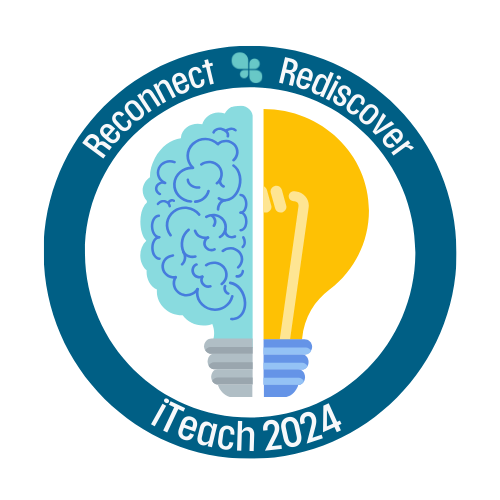AAU Releases STEM Initiative Report
Beginning in the fall of 2011, the Association of American Universities (AAU) launched the AAU Undergraduate STEM Education Initiative, which is focused on improving undergraduate education in STEM fields. The initiative’s goal is to promote the use of evidence-based teaching practices in STEM education at research universities, and to provide faculty members the support they need to use these tools to effectively engage students. AAU provided seed-funding for eight AAU member institutions to be project sites that would act as examples for wider departmental- and institutional-level changes in STEM education; Washington University in St. Louis is among these eight institutions that received initial funding. The AAU recently released Progress Toward Achieving Systemic Change, a five-year status report that provides information about the progress of the AAU Undergraduate STEM Education Initiative.
Overall, the status report suggests the initiative is progressing toward its goals. Progress Toward Achieving Systemic Change documents that the AAU collected annual reports and visits to the eight seeded project sites over three-and-a-half-years. The eight seed-funded member institution project sites “have engaged 39 departments, reformed 162 courses, involved 230 faulty members and 1,676 learning assistants . . . and transformed STEM courses for 138,531 student-seats.”
WashU saw enthusiasm for the initiative’s active-learning focus grow over time; for example, our clicker learning community began with nine faculty participants in May of 2014, and has expanded to fifty-three faculty members. By the fourth year of the project at WashU, fifty faculty members across fourteen STEM departments/programs were participating in the active-learning initiative. In that fourth year, these faculty members taught 71 courses, and gave 9932 students the opportunity to experience the benefits of active learning in STEM classrooms. Further, while the WashU AAU initiative initially focused on introductory-level STEM courses, a number of instructors teaching courses outside of the initial scope of the proposal, including non-introductory courses and non-STEM courses, also began adapting these active learning strategies for their classrooms. This suggests that the AAU initiative has helped transform not just individual courses or the teaching of individual instructors, but WashU’s teaching culture as a whole.
Examining the progress made at the project sites, the report cites trends in learning gains, decreases in rates of course failure, improved rates of persistence from gateway courses to upper-level courses, and a narrowing achievement gap for special populations (women, underrepresented minorities, and first-generation college students). WashU’s research team, CIRCLE, found that students’ participation in clicker-based active learning in introductory biology and chemistry courses predicted their exam performance, even when accounting for AP and ACT scores, course pre-tests, exam performance in other courses, and gender.
The report also found a number of key elements across multiple institutional levels that work together to improve undergraduate STEM education. Some of these factors include: developing shared learning objectives for foundational courses, acquiring and using institution-wide data analytical tools to examine student instruction and learning outcomes, redesigning classrooms as collaborative learning spaces, and engaging with administrative support structures, like centers for teaching and learning and SoTL-related research centers, in order to support departmental reform efforts. Through this initiative, The Teaching Center and CIRCLE at WashU collaborated to develop and evaluate programs and events, from workshops to the STEM Faculty Institute on Teaching (STEM FIT), which support faculty in developing active-learning approaches in STEM courses. Further, through the development of the CIRCLE fellows program, faculty had the opportunity to receive a 2-year supported fellowship, which enabled them to work closely with CIRCLE and The Teaching Center to add evidence-based innovations to their introductory courses. Throughout, CIRCLE has worked to assess the effectiveness of these campus-wide programs.
AAU is committed to retaining the STEM education initiative indefinitely, and is working to integrate continued support for STEM education reform and improvement into its staffing structure and organizational plans. It is working currently to broaden its initial reach, providing an additional 24 AAU institutions with mini-grants for innovations in STEM education, and expanding its network of faculty members and administrators through the AAU Undergraduate STEM Education Network, conferences, and targeted workshops. The AAU is also invested in continuing to coordinate its efforts with other national organizations, associations, funders, and industry partners, and partnering with federal agencies to find new ways to engage faculty members in the research-based STEM teaching strategies.
The successful AAU-supported activities at WashU subsequently led to the development of the Transformational Initiative for Education in STEM (TIES) at WashU. Drawing on the work of Carl Wieman, TIES, a collaboration among CIRCLE, The Teaching Center, and STEM departments, continues to support faculty in Psychological & Brain Sciences and Biology in transforming their courses through evidence-based pedagogies. The internal funding provided by the Office of the Provost for this initiative demonstrates the university’s commitment to continuing to promote and support the development of evidence-based pedagogical practice in introductory STEM courses at WashU. You can read more about TIES here.
Additionally, in June, the Howard Hughes Medical Institute (HHMI) awarded WashU a grant as part of its Inclusive Excellence Initiative, with the objective of fostering an inclusive learning environment in STEM education for all student populations, with an eye toward supporting a diverse next generation of science researchers and scholars. At WashU, the initiative will include providing training about inclusivity and support for faculty, student advisers, and undergraduate peer leaders, who interact most with first-year students in STEM. You can find out more about the HHMI grant here.
References
Association of American Universities (AAU). (2017). Progress Toward Achieving Systemic Change. Retrieved from https://www.aau.edu/sites/default/files/AAU-Files/STEM-Education-Initiative/STEM-Status-Report-ExecSum.pdf
Flaherty, C. (2017, October 2). A ‘New Normal’ in STEM Teaching? Inside Higher Ed. Retrieved from https://www.insidehighered.com/news/2017/10/02/aau-reports-efforts-improve-science-teaching-research-universities



